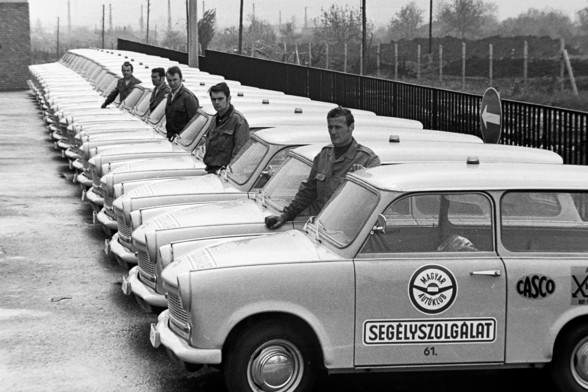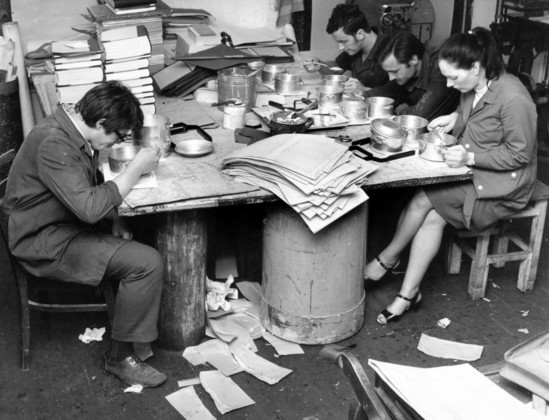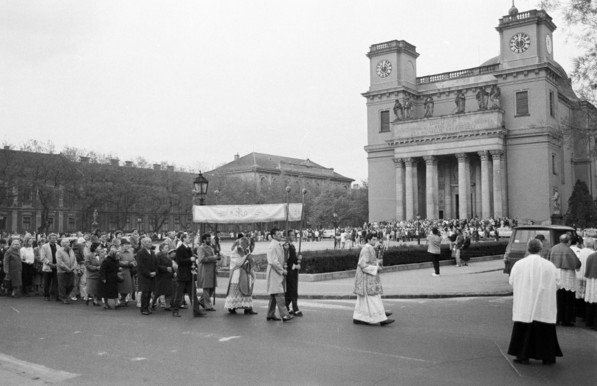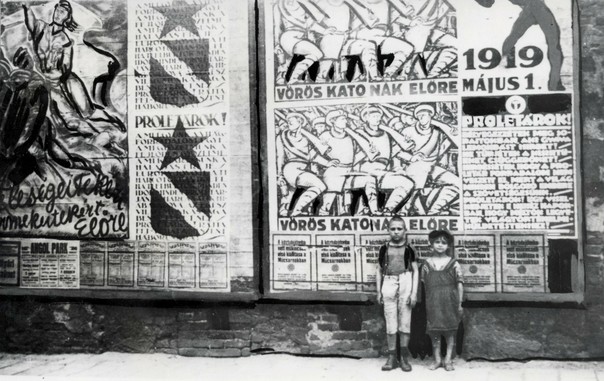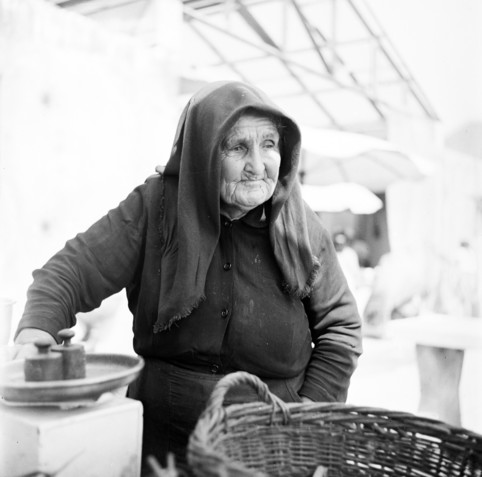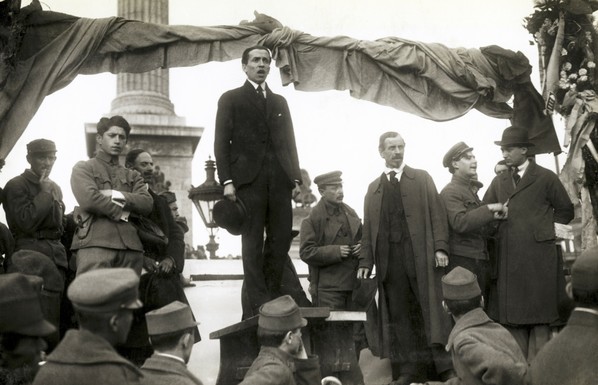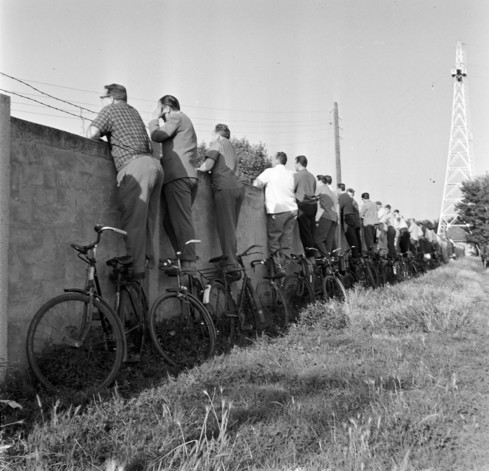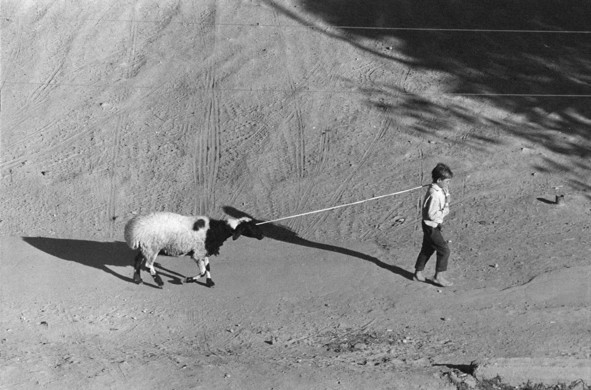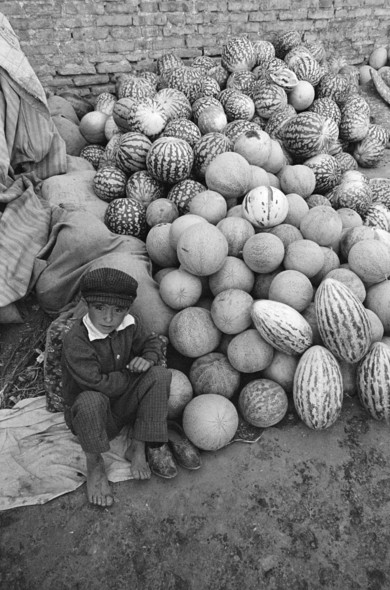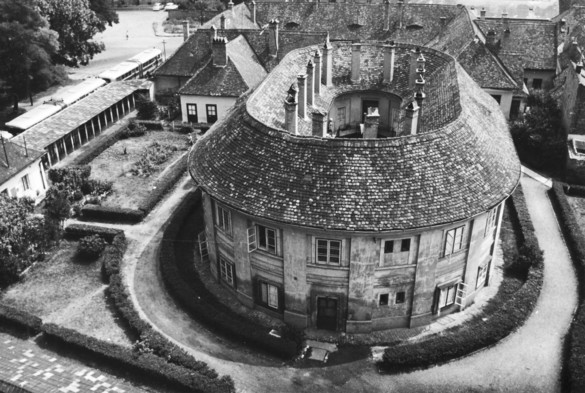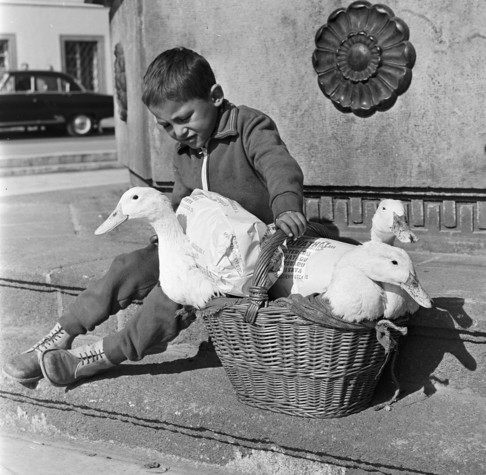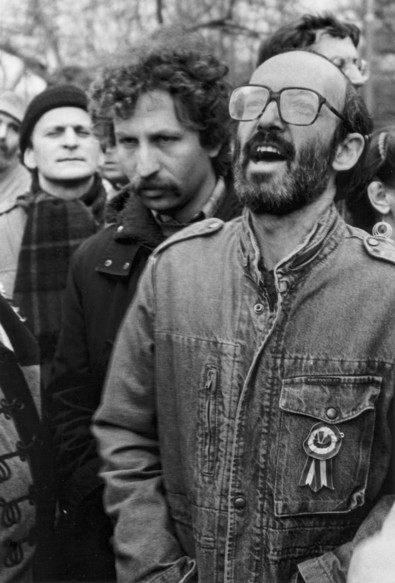#streetphotography #bauhaus #filmphotography
Recent searches
Search options
#fortepan
#streetphotography #bauhaus #filmphotography
Budapest, 1949. Today, 6 May, marks the 50th anniversary of the death of Cardinal Mindszenty, the arch-conservative and staunchly anti-Communist Hungarian cardinal, shown here at his show trial, before his inevitable imprisonment. A special Mass, marking this anniversary of his death, is to be held at the beginning of the conclave in Rome.
Source: Fortepan [164858] Fortepan/Album045
Budapest, 1970. Today, the first Sunday in May is always celebrated as Mother’s Day in Hungary. Flowers are invariably the order of the day, as can be seen in this photo of a celebration in the food retailer/grocery store known as KÖZÉRT. The sign on the wall at the back says, roughly, "We salute mothers".
Fortepan [186669] / Zsuzsa Gulyás
Budapest, 1990. May 1990, almost to the day 35 years ago, saw the first sitting of the new democratically elected Parliament since the end of communism in 1989 - the "change of system" as Hungarians call it. Here we see a young Orbán, and behind him, with the large moustache, László Kövér, a founder member of FIDESZ, and the current Speaker. So much hope and expectation at this time. It should have been so different.
Fortepan [289318] / Imre Prohászka
Budapest, 1965. Today's is May Day, always a colourful occasion in Europe, including in Hungary where it is a public holiday. It coincides with Labour Day and for Hungary, it's accession to the EU in 2004.
Fortepan [22004] / Judit N. Kósa
Budapest, 1971. A line of Trabant station wagons of the Hungarian Automobile Club known for emergency roadside assistance. Known as 'yellow angels' back then because of their colour, current vehicles still have yellow as part of their trim, much like the AA here in Aotearoa/New Zealand.
Fortepan [195577] / Sándor Bojár
Szombathely, 1971. Bookbinders on their lunch break in Szombathely, a town near the Austrian border. The stacked metal pans they are eating from were a common sight in Hungary when workers bought home cooked food to work for lunch, which is usually the main meal of the day.
Fortepan [153217] / Tamás Székely
Vác, 1990. My Hungarian in-laws have much family history in Vác, including a lot to do with the cathedral. It was the main reason we too went to live in Vác for a while. And while there, we too joined the Easter procession around the cathedral, just like the one shown here. Some of our Hungarian extended family are bound to be in this crowd somewhere.
Fortepan [250369] / Károly Vimola
Budapest, 1919. Revolutionary times. Another recent addition to the Fortepan archives from the time of the 1919 revolution (21 March-1 August, 1919) led by Béla Kun. The posters behind the two children proclaim, "Red Soldiers Advance".
Fortepan [230176] / Album087
Herend, 1954. Hungary's most well-known porcelain is Herendi, named from the village from where it has been made since 1826. You will find at least one piece, all hand-painted as shown in this photo, in most middle-upper class households in Hungary.
Foretpan [265811] / József Horváth
Székesfehérvár, 1958: In Hungarian, the term “kofa” [ˈkofɒ] specifically denotes an older, female vendor at a market. This word carries connotations of being assertive, direct, possibly even somewhat rough in their speech, a skilled negotiator, and a bit of a gossip. This is the word Fortepan used to describe this woman.
Fortepan [287001] / Ibolya Szentkuthy
Budapest, 1919. This was the year Hungary had its own Soviet-style revolution, led by the communist Béla Kun. The revolution quickly collapsed when Romania invaded Hungary a few months later. Kun escaped to the Soviet Union, where he was eventually executed in the 1930s as a "Trotskyite". I'm not sure if this photo is of Kun himself, but it certainly has a revolutionary feel about it.
Source: Fortepan [295940] / Kieselbach Galéria
Szeged, 1966. One way to watch a football match I guess.
Source: Fortepan / Sándor Bojár
Uzbekistan, 1971. A young boy leading a sheep. Judging by the shadows, it looks late in the day.
Fortepan [204760] / Sándor Kereki
Bukhara, Uzbekistan, 1971. A young boy sitting besides melons at a local market.
Fortepan [204715] / Sándor Kereki
Budapest, 1970. A rather distinctive 'stadium' shaped building in Budapest's III district, Óbuda. At this time silk buttons were made here, although it looks also like a residential building. Today it houses the Hungarian Wine Academy.
Fortepan [74123] / Fülöp Stipkovits
United Kingdom, 1956. Many of the photos in the Fortepan archive don't have any direct connection to Hungary per se. They are just in their collection without any provenance or context that we know of. This is a fine example of such a photo. Two miners somewhere in the UK. Such a terrific portrait of working men.
Fortepan [260016] / UWM Libraries
Vác, 1970. Not sure why you need to wrap your ducks in a basket like this. Maybe to stop them flying away before they are sold!
Source: Fortepan [268131] / Katalin Gárdos
Budapest, 1965. Hungary's much-loved national theatre, constructed in 1875, was controversially demolished in 1965, supposedly to make way for the construction of subway stops. More likely, the Communist regime hated it as a symbol of Hungary's bourgeois past, pride, and sense of nationalism. A new national theatre located elsewhere would eventually be opened in 2002.
Fortepan [138287] / Zoltán Szalay
Budapest, 1988. March 15 is one of the main national holidays in Hungary, commemorating the 1848 revolution. The rosette in Hungarian national colours, seen here on the leading dissident János Kis, has now been coopted by the Orbán regime to become an aggressive, almost compulsory symbol of nationalism. Wearing one today signifies support for his version of an authoritarian Hungary, rather than that of a freedom fighter.
Fortepan [188262] / Lajos Jakab




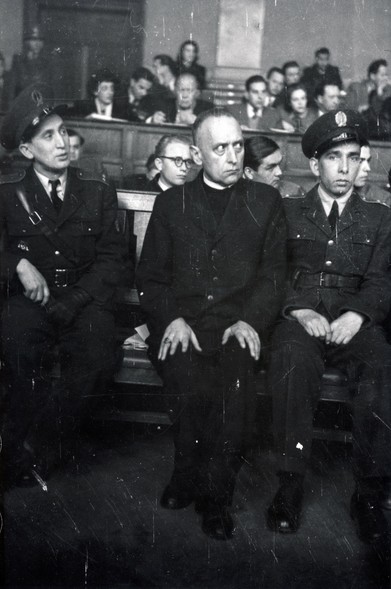

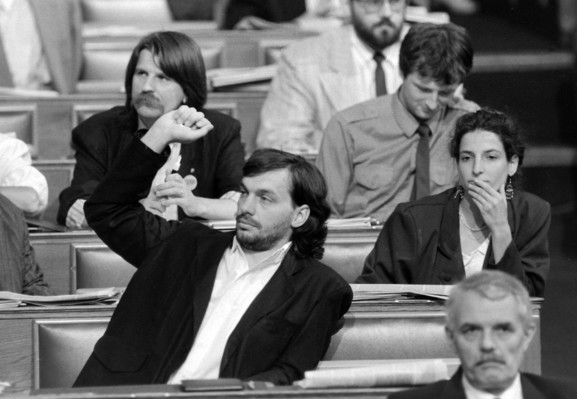
![Budapest, 1965. Today's is May Day, always a colourful occasion in Europe, including in Hungary where it is a public holiday. It coincides with Labour Day and for Hungary, it's accession to the EU in 2004. There is much to celebrate.
Fortepan [22004] / Judit N. Kósa
#fortepan #Budapest #Hungary #MayDay Budapest, 1965. Today's is May Day, always a colourful occasion in Europe, including in Hungary where it is a public holiday. It coincides with Labour Day and for Hungary, it's accession to the EU in 2004. There is much to celebrate.
Fortepan [22004] / Judit N. Kósa
#fortepan #Budapest #Hungary #MayDay](https://media.mstdn.social/cache/media_attachments/files/114/431/042/127/481/823/small/ad669ae215068198.jpg)
